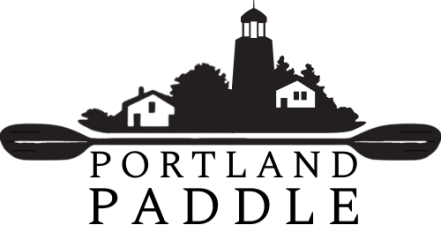Off Season Adventures: Rafting the Grand Canyon with Tall
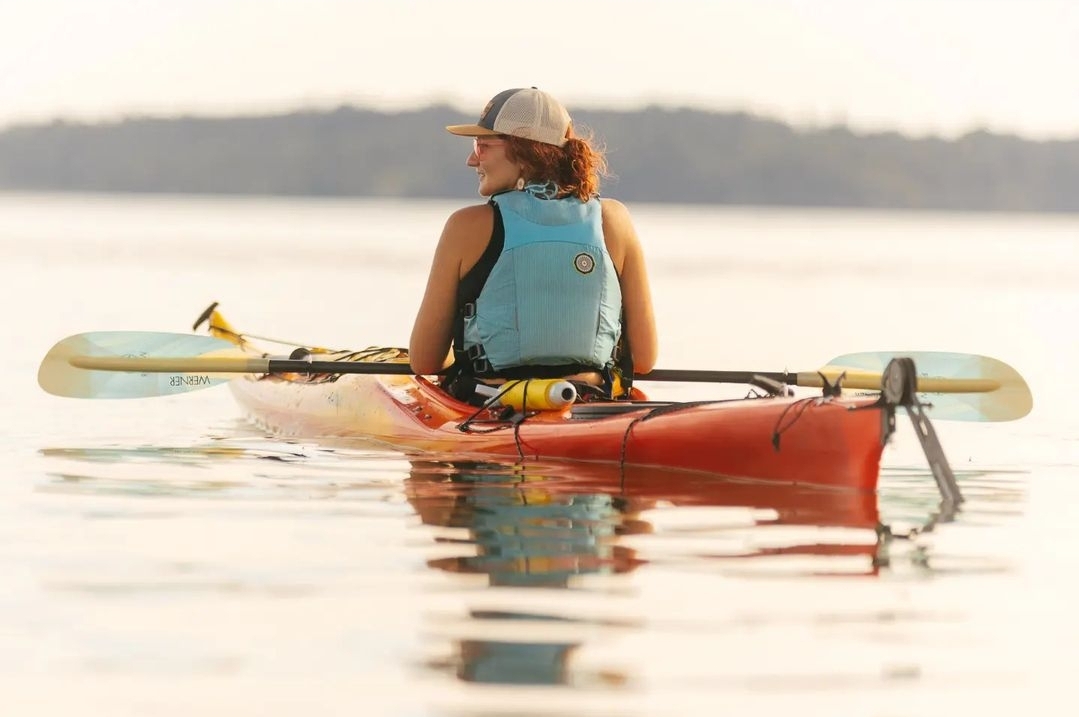
Planning and executing the journey of a life time!
Have you ever wondered what guides get up to in the off season? Many of us turn to winter sports like hiking, skiing, and ice skating. Others head south for more warm weather paddling adventures. While still others don the appropriate gear, brave the cold, and keep paddling in New England year round! During the winter months we like to share updates on what our guides have been up to. Check out all the posts in this series.
This week we sat down with P2 guide Ashley “Tall” Leedberg, to hear about her plans for an upcoming trip to Grand Canyon National Park.
Q: Can you tell us a little about yourself? Where are you from, how long have you been a guide, what guide licenses do you have, etc?
Tall: My name’s Ashley, but most people call me Tall! Born and raised in Maine. I’ve been a Maine Guide for 6 years. I started working for Portland Paddle in 2017 as Shore Staff. In 2018, I passed my Sea Kayak Guide exam after taking the Maine Guide Training course with P2. I moved away from the coast to the western mountains region of Maine in 2020 and figured I should test for my Recreation Guide License as well, which covers inland paddling, backpacking, and motor sports, and that snowballed into wanting a third. In the spring of 2022 I trained with Three Rivers Whitewater and acquired my Whitewater Guide License, too!
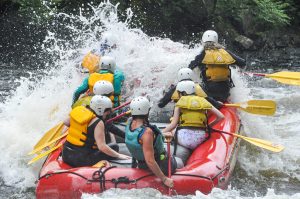
Tall gives guests “the goods” on the Kennebec! – photo courtesy of Rapid Shooters Media
Q: How long have you been paddling? How long have you been whitewater rafting?
Tall: I didn’t really start paddling until I started working for Portland Paddle. I’d worked in the restaurant industry and was a Travel Agent for a couple of years before I realized that the indoors was not the place for me. I’d done some white water paddling before, but only maybe once or twice. Making the jump to the outdoor industry was a game changer for me.
Q: What’s your favorite thing(s) at Portland Paddle? A particular trip, a lesson, something about the vibe, etc.
Tall: I could go on for hours about my love for Portland Paddle, but I’ll keep a long story short. The community that gravitates to P2 is wholesome, supportive, and all around full of badasses (can I say that here?) and I do credit finding them to saving my life in a way. My favorite trips to do are sunset tours – they have a more peaceful vibe to them, and the seals usually make an appearance which always puts a smile on peoples’ faces. I’m also super fond of the preseason guide meetup where all the guides get together to brush up on our skills and fool around in the bay.
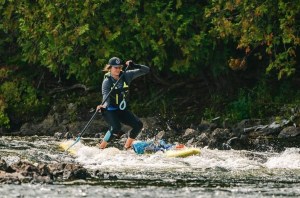
Tall shows off her whitewater SUP skills! – photo courtesy of Chris Shane
Q: Let’s turn to your upcoming adventure. Will this be your first trip down the Grand Canyon?
Tall: This will be my first trip! I’ve never seen the Grand Canyon, and I’d honestly never been to Arizona/the southwest until this winter’s road trip! I’ve spent the last few months exploring the region, and am super excited to finally get on the Colorado River soon!
Q: What is the Colorado through the Grand Canyon like? How much of it is rapids vs flats, how big are the rapids, how long does it take to raft it, etc?
Tall: The Grand Canyon is just that – a grand canyon haha. The canyon walls reach up to 6,000 feet from river to rim in most places, and the deepest layer dates back to 1.84 billion years ago! The Colorado River runs through the entirety of the canyon, and is paddleable for 277 miles from Lee’s Ferry to Pearce Ferry. The majority of trips take out at Diamond Creek, which is 225 river miles from Lee’s Ferry. That’s what we’ll be doing on this 21 day trip. We’ll be going down with 8 rafts (2 people per raft) and one of my friends is kayaking. The rapids are BIG. In the US, we use a 1-6 class scale to measure rapids, 1 being riffles and 6 being basically unrunnable. The GC uses a more global classification scale of 1-10. While the river has a lot of flat water miles, there are a lot of rapids, and several 8, 9, and 10 rapids along the way. I’ll let you know in April if they’re as big as they say!
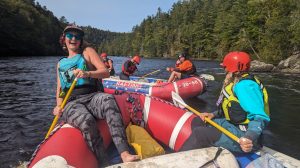
Tall and other P2 guides take a day to play on the Kennebec river together
Q: How will this trip be different from the types of trips you guide on the Kennebec and Dead Rivers in Maine?
Tall: Well, obviously we’ll be carrying a bunch of food and camping gear, which we don’t have on a day trip. Organizing, packing, and distributing the weight of all that gear is a huge part of the planning process. And it means each raft only has room for two people, which leads me to the biggest difference. On the canyon, we’ll set our rafts up as oar rigs instead of paddle craft like we typically do in Maine. When you paddle a raft, as a guide, you sit in the back of the raft with your paddle, called a ‘guide stick’, in the water and call the shots to the team sitting in the boat in front of you, using their paddling momentum and your ruddering/drawing to get from point A to point B. There’s always at least two people in a paddle raft, and guiding we usually have at least six passengers. Each person has a paddle similar to a canoe paddle and works together to move the boat, under the guide’s direction. Rowing is a bit more complicated, but it gives you a lot of power and control once you get the hang of it. It’s just you and two long oars, propped up on oarlocks from roughly the center of the raft. And unlike rowing in most other situations, you face forward when rowing rafts in rapids because you need to be able to read the water. It consists of a lot of pulling, pushing, and working with the flow and current of the water. There’s more of a finesse to the art of rowing. I say all this only having rowed one time last summer, so I’ll have to report back on my learnings after this trip haha
Q: Big picture, what goes into planning a grand canyon trip?
Tall: This has been an experience! I’ve planned trips before, but nothing like this – 3 weeks on a river I’ve never seen before. First, I entered the lottery in February 2023 and was lucky enough to win. Planning started shortly after. My permit is for 16 people for the standard length of time. Building the crew was the first step after that, and then securing a rental company to supply us with the provisions for the trip (rafts/gear, food, groover, kitchen supplies) and then there are also logistics to be planned. Building a food menu, a river itinerary, pre and post river hotel nights, and communicating with the NPS about fees and manifests. There are a lot of moving parts, and they tend to be ever changing.
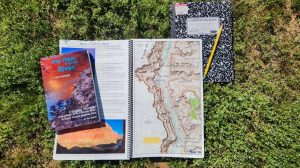
Day hikes are a key part of the Grand Canyon experience!
Q: What has been the most challenging part of the prep process so far?
Tall: I said it from the beginning and I really thought it would change as I moved through the process, but building the crew has been the most time consuming part. For me, it was important to invite a few people who haven’t had the chance to experience the Grand Canyon, as well as folks who have. I have a lot of friends who have been down this river a lot of times, and I’m very grateful for them joining my trip and sharing their experiences and knowledge during my planning process. It’s a magical place, and I wanted to make sure that friends who wouldn’t normally get the chance to experience it were also on the roster. Out of the 16 people, this will be an entirely new experience for 4 of us.
Q: What has been most enjoyable about the prep process?
Tall: The most enjoyable process has probably been getting to buy new gear haha. I’ve had my eye on some really nice Watershed bags and couldn’t convince myself to pull the trigger until now.
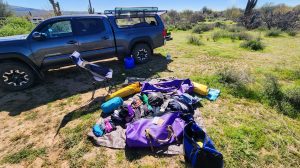
Gear, gear, gear, you need a lot for 21 days!
Q: What are you most excited about the trip?
Tall: I’m most excited to experience such a magical place with 15 of my dearest friends. From the stories I’ve heard, I can tell that this trip is going to be life changing. I’m calling it a once in a lifetime trip. Even if I somehow manage to go on another trip someday, there will never be another “first”, and that in itself is humbling and exciting.
Q: What skills or knowledge should someone have before going on a Grand Canyon trip, or applying for a permit?
Tall: Whitewater and backcountry experience is of course very handy! Rowing a raft, reading white water, knowing how to handle minor medical emergencies, and what kind of clothes/gear to use are nearly essential.
Q: Speaking of permits, isn’t the process to get one pretty complicated? Could you explain it briefly?
Tall: It’s not especially complicated to apply, but the likelihood of winning is rather low. I know some folks who’ve been applying for a decade and haven’t been chosen! The lottery opens on February 1st and costs $25. You choose several dates that you’d like to launch, pay the fee, and cross your fingers. It’s a weighted points system lottery (whatever that means) and at the end of February, the National Park Service sends out an email letting you know if you won or not. I’d never applied before and decided to enter with a few other friends under the mutual ‘if i win, i’ll invite you’ promise. In general the more years you’ve gone without pulling a permit the higher chance you’ll get one, so I was pretty surprised when I got that email!
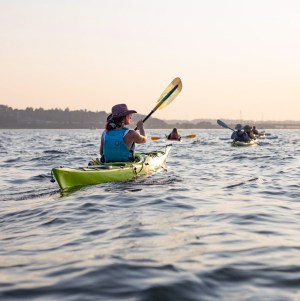
Tall paddling with guests on the ocean – photo courtesy of Tide to Pine Photography
Q: Is there anything from your sea kayaking or guiding experiences that you think has helped you prepare for this?
Tall: Oh for sure! I think having the experience of planning trips, knowledge of what to wear/not to wear, pack, or bank on has helped. One thing I know for sure is that you can’t plan everything, and even the things you do plan will probably end up changing. The motto “go with the flow” is a pretty significant piece of advice in preparing for this trip.
Q: Anything else you want to share?
Tall: I had never applied because I really didn’t think I would win, so for a long time my mentality was ‘why bother?’. I think my biggest takeaway from this is if you want something, go after it. If you don’t try, you don’t win!
